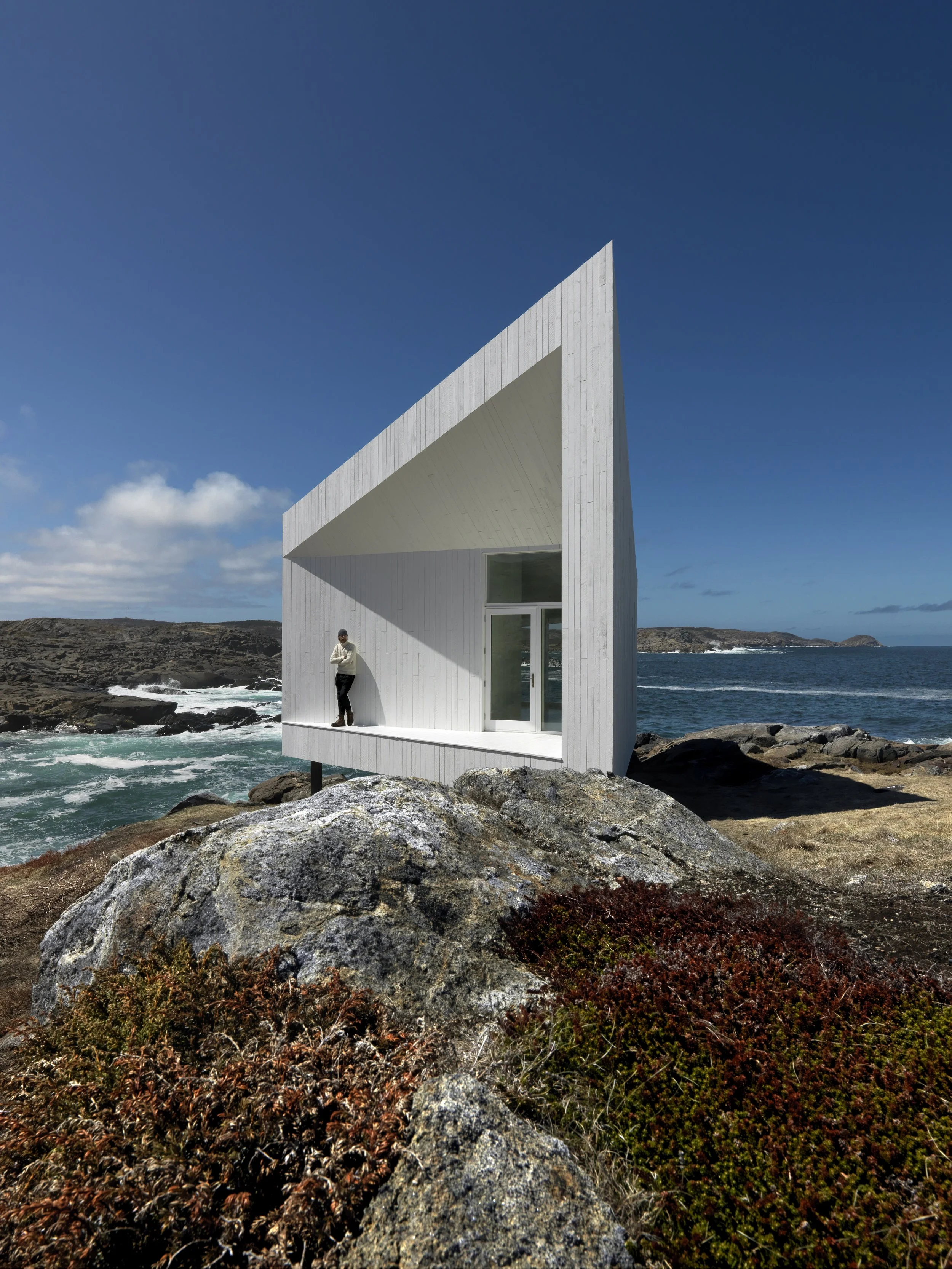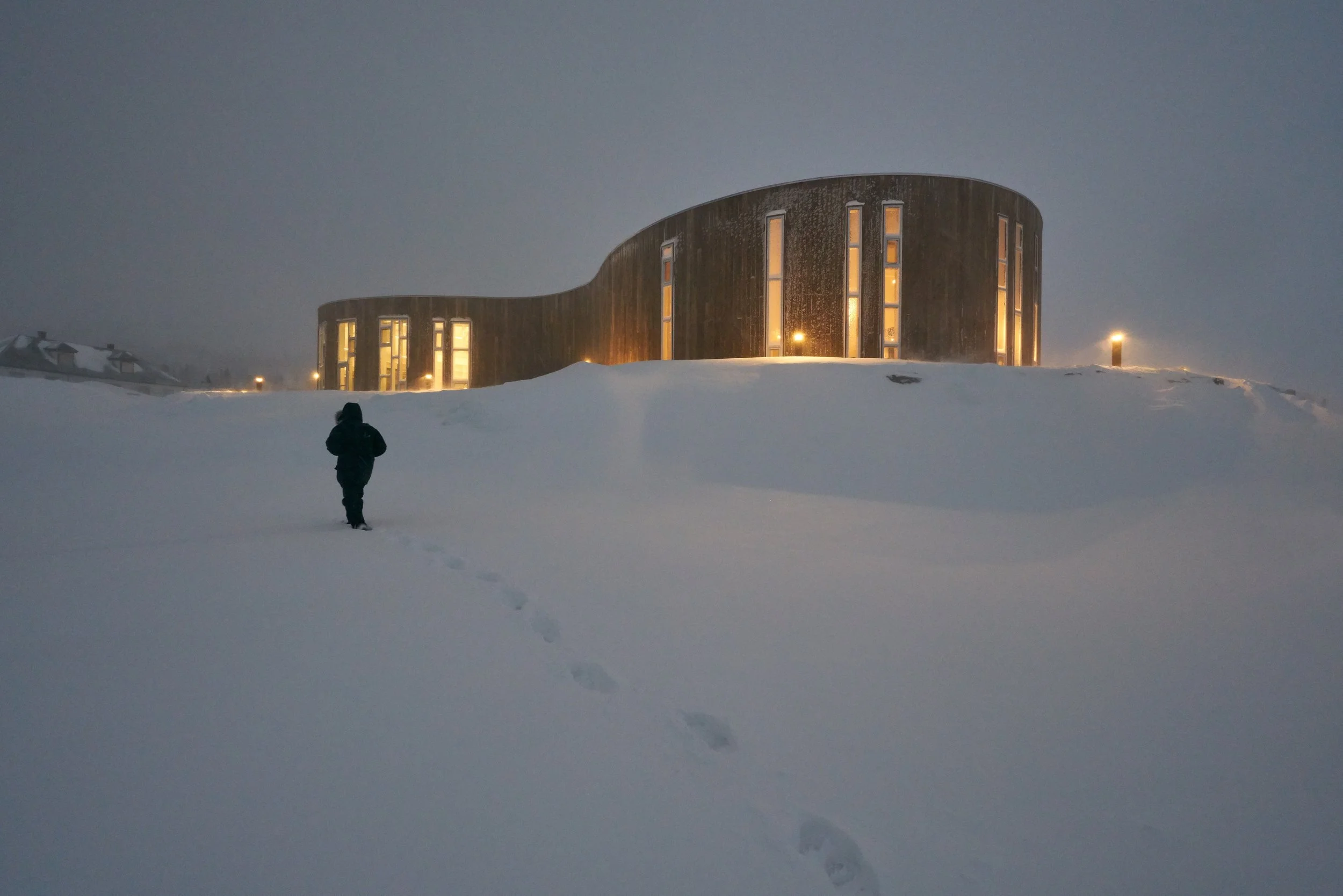Spotlight on Todd Saunders: (Un)Common Threads 2025 Featured Speaker
Before he was a world-renowned architect, Todd Saunders was a kid growing up in Gander, NL who loved the outdoors and working with his hands. He spent time with his father and uncles learning how to build, which helped shape his approach and instilled within him a love for the craft. This early exposure would eventually help open new doors and possibilities.
Today, the Bergen-based Saunders (who founded Saunders Architecture in 1998) is best known around here for designing the acclaimed Fogo Island Inn and accompanying Fogo Island Arts' artist studios; but his work can be found all over the world, including the Illusuak Cultural Centre in Nain, the Fedje Hotel on the west coast of Norway, and the Tekαkαpimək Contact Station in northern Maine (shortlisted by Dezeen as one of the best new buildings in the world for 2025 and just one of 17 projects shortlisted from 4,300 entries around the world).
Saunders' buildings aren't just buildings - they're pieces of art that are woven into the very fabric of the communities in which they stand and have become destinations themselves.
This year, we're thrilled to have Saunders as a featured speaker at (Un)Common Threads 2025, taking place on November 4 at the Sheraton Hotel in St. John's.
Todd Saunders
We recently caught up with Saunders to talk about his creative practice, what keeps him curious and how this province has helped shape his work and creativity.
(This interview has been edited for length.)
Business & Arts NL: You grew up in Gander, but you've lived and travelled all over the world. What is it about this place, this province, that inspires you and helps spark your own creativity?
Todd Saunders: Most of what I learned about architecture I learned before I was 15 — and that's when I lived in Newfoundland. It's more like a visceral thing. That's where I developed my intuition, and then I learned how to build with my uncles and my father. There's a lot of positive memories there.
When I'm back in Newfoundland, everything just feels right. When I'm travelling to other places, I feel like a foreigner, and you have to kind of guess if you're doing the right thing. But on Newfoundland, I feel like I have more of an inner knowledge of what works and what doesn't, so it doesn't feel like guessing. So my architecture gets a bit deeper. I'm kind of against rational thinking in architecture — 30 per cent of your brain is rational and then 70 per cent of your brain is emotional. I think these emotional parts are getting squeezed out of architecture. And I think when I get back to Newfoundland, I tap more into that pureness. When you're a kid, you're doing things by feeling and experiencing. It just feels really good for me to make buildings there.
Fogo Island Arts’ Squish Studio
Business & Arts NL: I'd like to know more about your creative practice. What keeps you curious? What challenges are most interesting to you? And how has your practice evolved over time?
Todd Saunders: That's actually what I'm going to talk about (at the summit)...I'm making a list of 100 things where I've experimented with myself on creativity. And it goes through everything from separating yourself from the noise — that's a big problem, when you start getting very busy, you get a lot of noise, and you don't get the quiet to draw; so it's like creating a chamber where you can actually work. Another part of my creativity is actually a lot around discipline and ritual, like being very clear of when I block out time to do stuff and protect my creative space.
l'm always outside kayaking, biking, skiing, and my ideas are actually coming from a lot of movement and being in nature. I have about 100 different ways that I instigate creativity and create space around me, and I know what goes against that. That's what I'll be sharing during this lecture.
Fogo Island Inn. Photo: Bent René Synnevåg
Business & Arts NL: The projects you've worked on, they're more than buildings — they become destinations and they can help shape the identity, economy and culture of a place. When you’re designing, how do you balance creating something iconic with ensuring that it serves and strengthens the local community?
Todd Saunders: I have a lot of conversations with the community, so it's based on what they need, not what I need. For example, the Inn — it's not my Inn, it's an Inn where anyone can stay there. So basically, the client was everyone, because everyone could spend the night there. [On several occasions, the Fogo Island Inn has offered permanent, full-time residents of Fogo Island a complimentary night's stay.]
The visitors' station I just did in Maine, it's for a lot of hikers coming to national parks — they're all different nationalities, different ages and different physical abilities. So you have to step into the shoes of a lot of different people. And in order to do that, you have to ask a lot of questions, and then you have to listen to what people say, and merge that into one type of space. So it's a lot of diplomacy, a lot of asking questions, and then it's cutting a line through that to make it work for as many people as possible. Most of my buildings, they're kind of like a gift to the community. Like the cultural centre in Nain, I found out basically they needed a living room where people could meet, and that's what it became.
Illusuak Cultural Centre in Nain
Business & Arts NL: How do you see creativity driving sustainable architecture, not just in terms of materials and energy use, but in shaping how people live with and within their environments?
Todd Saunders: If you look back the last 100 years at how much change has happened, it's all about innovation and new ideas. And (where) these ideas start from, it's like a zap of lightning, and I think the idea is to grab that initial idea and then roll with it.
I think creative people are kind of fearless, in a way; they're like the first people in the woods walking, the trailblazers. If you're going to go and create a future, you have to have an imagination. You have to imagine it and set your sights towards it. And there's resistance the whole way. But I think with creative people, it's pretty interesting — it's a bit like MacGyver. Right now, we're in a situation where we always have been, and you have to figure it out. It's the creative mind combined with practical doers, makers — I think that's where the future is... I think that's what the world needs right now.
Business & Arts NL: What's the best piece of advice that anyone's ever given you?
Todd Saunders: I read a quote where Henry James said there's three things in life you have to do: One is be kind. Two is be kind. And three is be kind. It's basically what it comes down to. Everybody's in this together. We're not all in the same boat, we're all in the same pond, I guess. Be kind and share knowledge. I think we go quite far just by doing that.
Tekαkαpimək Contact Station in Maine
Business & Arts NL: Is there anything else you'd like to share about your upcoming presentation at the summit or anything you'd like to add?
Todd Saunders: The title is "In the Garden: A Practice of Creativity"…you have to do the investment in creating a garden, tilling the soil. It's a lot about patience and care, and sometimes the garden doesn't grow, you meet resistance. There's a lot of themes around that. And gardening in Newfoundland is not an easy thing (laughs). So there's a part of cultivating creativity in Newfoundland, which is pretty interesting. My great-great-grandfather on my father's side, he built houses in Glovertown and had a sawmill and had a furniture shop where he made furniture. And one year he cut his left arm off. And then when it healed up a little bit, he made a wooden arm with a brass claw and a leather strap, and three months later, he was back at work. That's cultivating creativity in a place where you have very few resources. And I think that's why there is so much creativity in Newfoundland, because there was less to rely on, and you had to rely on yourself. So I think the lecture is going to be a bit more around that....you create your own garden. But you can also do it with other people.
Catch Todd Saunders' featured talk at (Un)Common Threads 2025 on November 4 at the Sheraton Hotel in St. John's, NL (click here to purchase tickets).






